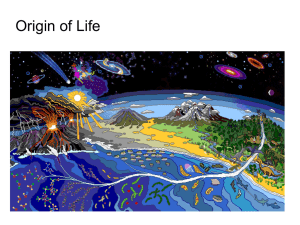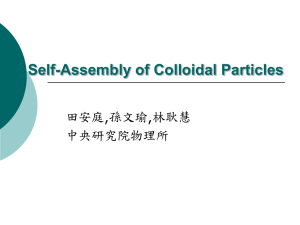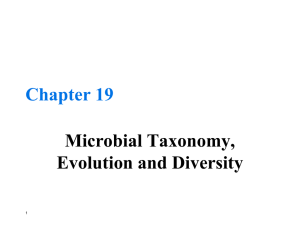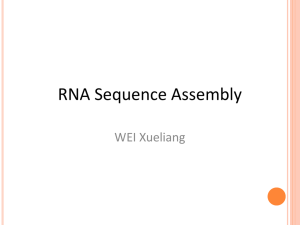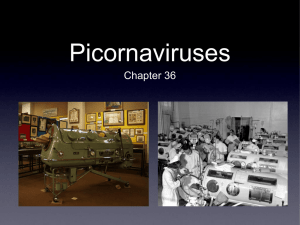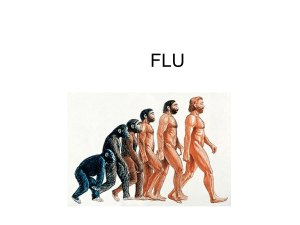1/23/2013 Dr. Vann: Origins of Life
advertisement
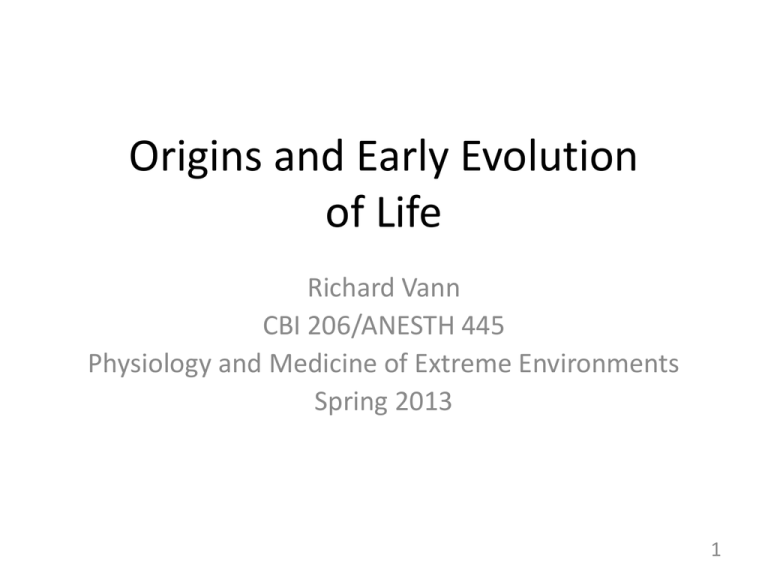
Origins and Early Evolution of Life Richard Vann CBI 206/ANESTH 445 Physiology and Medicine of Extreme Environments Spring 2013 1 Origin of Life Topics • Who, when, what, where, how, why • Discussion 2 Panspermia & Spontaneous Generation Anaximander 611-547 BC Anaxagoras 500?-428 BC Aristotle 384-322 BC •Panspermia: life exists throughout the universe •Spontaneous generation: life forms by the action of the sun on the primordial terrestrial slime 3 Recipe for Mice: Jan Baptista van Helmont (1580-1644) • Put a soiled shirt and grains of wheat in a jar and let them ferment • Mice form after 21 days • No experimental evidence provided 4 Friedrich Wöhler & Urea (1828) • Organic and non-living compounds are different (“élan vital, life force, will-to-live”) • Wöhler made urea by heating ammonium cyanate • "I can no longer, so to speak, hold my chemical water and must tell you that I can make urea without needing a kidney, whether of man or dog." • A founder of organic chemistry 5 Death of Spontaneous Generation: Louis Pasteur (1859) • Living systems arise biotically from other living systems 6 Charles Darwin (1871) “But if (& oh what a big if) we could conceive in some warm little pond with all sorts of ammonia & phosphoric salts, light, heat, electricity, etc. present, that a protein compound was chemically formed, ready to undergo still more complex changes …” - letter to Joseph Hooker7 Aleksandr Oparin (1924) •Early atmosphere was strongly reducing •CH4, NH3, H2O , H2 (no O2) •Sunlight reacted with non-living chemicals in the “primeval soup” •Unique, abiogenic, spontaneous generation of life •No difference between a living organism and lifeless matter 8 J.B.S. Haldane (1929) “When ultra-violet light acts on a mixture of water, carbon dioxide and ammonia, a vast variety of organic substances are made, including sugars and apparently some of the materials from which proteins are built up … [B]efore the origin of life they must have accumulated till the primitive oceans reached the consistency of hot dilute soup.” 9 Harold Urey 1893-1981 Stanley Miller 1930-2007 10 Miller-Urey Ocean-Atmosphere (1953) 11 Miller (1953). Production of amino acids under possible primitive Earth conditions. Science 117: 528. 12 Space • Radio astronomy found evidence of organic molecules on space dust • Laboratory simulations of deep space created organic molecules • Collisions of comets with primitive Earth • Murchison meteorite in Australia 1969 contained organic molecules 13 Exogenesis and Mars • Mars may have been habitable a billion years before Earth • A meteorite from Mars recovered in 1984 was claimed to contain fossil life but this is disputed • The question of exogenesis from Mars to Earth is unresolved 14 Hydrothermal Volcanic Vents DSV Alvin (1977) Giant Clams Hydrothermal vents Tube Worms 15 Corliss, Baross & Hoffman. 1981. An hypothesis concerning the relationship between submarine hot springs and the origin of life on Earth. Oceanolgica Acta 4 (Suppl): 59-69. 16 Deep, Hot Biosphere Yellowstone (1966) Rock-Eating Bacteria Thermophiles Laboratory Simulations • Reactants: N2, CO2, S, Fe • Minerals: Fe-S, Ni-S • Products: NH3, amino acids, peptide bonds, C-fixation Fecomplexes 17 Origin of Primordial Molecules - Deamer (2002) 18 Timeline ~13.7 bya ~11.5 ~4.6 ~4.4 ~4.4-3.9 ~4.2-4.0 4.0-3.7 ~3.5 ~0.5 ~1 mya “Big Bang” (atomic evolution) Supernovae & heavy elements Sun, solar system & Earth Oceans formed Chemical evolution Earliest life at hydrothermal vents? Earliest life at sea level? Earliest fossils (Apex chert, WestAus) Organic evolution (‘naked genes’) 19 Social evolution (humans) When was Earth Ready for Life? - Schopf (2002) Sterilizing Meteor Storms Origin of Sustained Life Oldest Fossils: Stromatolites Success of Life 4.5 Planetary Birth 4.0 3.9 3.5 Billions of Years Ago (bya) 3.0 20 Life and the Atmosphere STERILIZING METEOR STORMS CHEMICAL EVOLUTION OXYGEN CATASTROPHE SUSTAINED LIFE OLDEST FOSSILS: STROMATOLITES EUKARYOTES O2 metab BIF 21 3.9 – 3.5 bya Time Many early life forms (temperature, O2 Catastrophe anaerobic, radiation, arsenic, salt) LUCA Present Biochemistry (ATP, Krebs cycle, RNA, DNA) 22 NASA Definition of Life • “A self-sustaining chemical system capable of Darwinian evolution” –Self-sustaining (energy production) –Chemical system (cell membranes) –Darwinian evolution (replication) • What’s the driving force that makes this system run? 23 Energy and Complexity - Chaisson (2001) Stars Planets Large animals Human brain Society 2 erg/g/sec 75 20,000 74,000 500,000 24 Sagaminopteron Ornatum 25 Thermodynamics • 1st Law: energy is conserved, not created or destroyed – all forms of energy are inter-convertible • 2nd Law: heat flows from higher to lower temp – Energy conversions are never complete • Some energy is always lost to the environment as wasted heat (ΔQ) – Entropy (S) = wasted heat divided by the environmental temperature (ΔS=ΔQ/T) • Entropy is generated with each energy conversion • The entropy of a closed system always increases • Entropy is “time’s arrow” 26 Entropy Generation Rate - Silva (2008) 27 Entropy (S) and “Heat-Death” Universe ∆Suniverse > 0 dS/dt > 0 Energy Life ∆Slife = 0 • Life is maintained by energy input from the universe & entropy export to the universe • Does time stop when dS/dt=0? 28 How Did Early Life Get Energy? • Heterotroph – the ‘premordial soup’ provided high energy complex molecules that had been abiotically synthesized (Oparin & Haldane). – Modern heterotrophs eat other organisms. • Autotroph – energy derived from oxidation of ammonia to nitrous & nitric acid, sulfur to sulfurate, iron to iron oxide, and methane to carbon dioxide & hydrogen. 29 Reverse TCA Cycle 2 CO2 + 4 H2 no catalyst: very slow 2 H2O + C2O2 (acetate) 30 Iron-Sulfur World - Günter Wächtershäuser • Life originated on mineral surfaces near deep hydrothermal vents (“primordial sandwich”) • 1st cells were lipid bubbles on mineral surfaces • Metabolism predated genetics with iron sulfides as energy source (chemoautotrophs) • Photoautotrophs evolved as chemical energy was deleted • Autocatalytic & self-replicating metabolism 31 Thioester World - de Duve • Thioester bonds are high energy & played the role of ATP in early life • Thioesters are intermediates in the ancient processes leading to ATP • Thioesters evolved into ATP 32 Driving Force: Entropy & Probability • Heat is molecular motion • Most probable configuration has greatest entropy Less probable (S1) More probable (S2) S1 < S 2 • Attractive & repulsive intermolecular forces determine the most probable configuration More probable (S4) Less probable (S3) S3 < S4 33 Simulation of Self-Assembly http://complex.upf.es/~harold/lipid_world/index.html Before self-assembly (low S) After self-assembly (high S) 34 Self-Assembly of Liposomes - Bangham (1961); Deamer (1997, 2002) Murchinson Meteorite extract Murchinson Liposomes 35 Biological Self-Assembly • Lipid bi-layer membranes • Structure guided by attractive & repulsive forces (“lock-and-key”) Antibody & antigen Substrate & enzyme 36 Lipid World - Serge, Ben-Eli, Deamer, Lancet (2000) • Coacervates. 1-100 μ “proto-cells” (Oparin 1932) • Microspheres formed by heatpolymerized amino acids (Fox 1957) • Murchison carbonaceous meteorite (Deamer 1997). Catalytic activity, replication, etc. 37 also proposed. Tobacco Mosaic Virus (TMV) • TMV self-assembly from separated protein & RNA 38 Darwinian Evolution - Darwin (1959) • Modified progeny of ‘A’ are better adapted to the environment & survive • Subsequent generations of ‘B’ – ‘F’ are unmodified & become extinct • Track ‘A’s genealogy into deep time to find LUCA • Fossil record too limited 39 Systematics or Phylogenetics - Haeckel (1866) • Commonality of traits – Animals – consumers – Plants – producers – Protists – reducers Evolutionary time • Eucaryote* – nucleus, etc. • Prokaryote* – no nucleus * Stanier (1961) [common biochemistry] • LUCA • Fossils–no! Genetic code? 40 DNA Code Cytosine Guanine Adenine Thymine 41 RNA World • RNA-based life predated DNA life • RNA can act as its own catalyst (‘ribozyme’) so proteins were unnecessary • RNA evolved into DNA which is more stable • Ribosomal RNA (rRNA) is a remnant of the RNA World • Problems: RNA chemically fragile, difficult to synthesize abiotically, limited catalysis 42 Pre-RNA Worlds • Alternative nucleic acids – RNA precursors: threose nucleic acid (TNA), PNA (peptose), GNA (glycol) • PAH (Polycyclic Aromatic Hydrocarbon) World – PAHs are amphiphilic and might self-organize in stacks as a nucleic acid backbone 43 Clay World - Cairns-Smith (1985) • Proto-life was inorganic and existed on solid surfaces such as clays • Clays catalyzed formation of complex organic molecules • Clays acted as template for RNA self-assembly and evolved into RNA • Natural selection enhanced their replication potential 44 Ribosome - Woese (1981) • Site of protein synthesis in all cells – Functionally constant over time • Ribosomal RNA 16S – RNA “dictionaries” → phylogenetic trees – Genotype → phenotype (cell membranes) 45 Phylogenetic Tree of Life (16S rRNA) - Woese (1990) ‘progenotes’ 46 Horizontal Gene Transfer (HGT) • ‘Infective heredity’ • Endosymbiosis – Mitochondria (1.7-2 bya) – Plastids (1.5 bya) • Antibiotic resistance – Plasmids • Viruses 47 Artificial HGT (Social Evolution) - Craig Venter • Sequence yeast cell genome (Myoplasma mycoides) • Synthesize M. mycoides genome from lab chemicals • Transplant synthetic genome into recipient cell (M. capricolum) • Test viability of synthetic cell • Next find minimal viable synthetic genome • Applications – bio-fuels, vaccines, drugs, etc. 48 • What are the limitations of the field? • What came first: metabolism or replication? • What would be the result if you could re-run evolution again beginning from the Big Bang? • What would be the result if you re-ran evolution from the Big Bang 1,000 times? • Is laboratory investigation of the creation of some form of life valuable? • If you were in charge of an origin of life lab, where might you focus your efforts? 49
